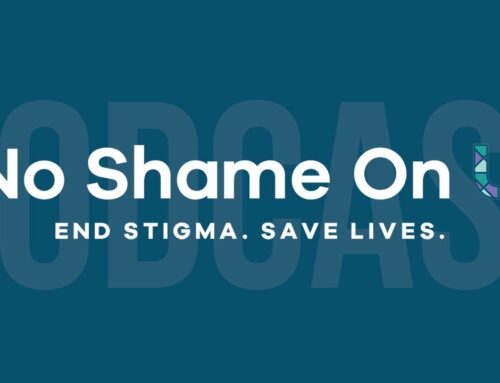Breaking the Cycle of Stress: The Impact of Access to Everyday Necessities
Food insecurity is an existential problem in the United States. Millions of people live in the uncertainty that they might not have access to enough food, shelter, and clothing to keep themselves and their families safe.
It’s a problem that has been kicked around on debate stages since the dawn of politics. While there is no single, ready-made solution, there are basic adjustments that can be made to resource disbursement and community outreach that may make a significant difference.
Existential Stress
Stress is an almost universal feature of adult life in the western world. People are stressed because they have too much work. Not enough work. Too little time. Too much time. But behind the veil of professional angst, there is a much more fundamental type of fear. The stress that stems from existential uncertainty.
Will I be able to afford food this week? Clothes? Shelter? This level of uncertainty can have a profound effect on the people experiencing it, resulting in stress that can take on physical forms. Elevated heart rate, inflammation, insomnia.
Stress at any level is bad for your body. And yet, when it comes to food insecurity, the usual advice doesn’t cut it. “Hungry? You know what you really should try? Self-care, and the occasional meditation. It will change your life. It really will.”
Equal access to a basic level of food, shelter, and clothing is a requisite component of happy, healthy life. Below, we describe how these things can be achieved to create a fairer, healthier world.
Myth: There Are too Many People to Ensure that Everyone Gets What They Need
This is a common argument in favor of complacency. And, when left unexamined, it seems to make sense. Almost half a million homeless people are living in the United States alone. No one to this day has come up with a sustainable solution for how to help them.
And yet it’s not right to say that there isn’t enough to go around. Rather, that, on a societal level, we haven’t figured out a way to equitably and efficiently distribute resources.
Take food production in the United States as an example. Almost 90% of food eaten in the United States comes from family-owned farms. That’s rural America. And yet, despite being near the food, most American rural counties aren’t actually getting to eat it. Almost 90% of counties experiencing food insecurity are also rural.
Rural communities make the food. Then they ship it off for other people to eat.
I don’t want to sound crass but—
Never a great way to start a sentence, but go on.
They’re shipping the food off to people who can afford to pay for it, right? If these rural towns had a stronger economy, they wouldn’t have food insecurity.
There’s certainly truth to that. Food insecurity is intrinsically tied to poverty. But take a moment to think about what food production currently looks like.
Farmer Gretchen grows a wide range of produce on her family farm. When harvest time comes around, she processes and packages her food, for it to be sent out in plastic wrapping to grocery stores all across the country.
Some of her food travels hundreds of miles in trucks, to wind up days later at grocery stores, no longer quite so fresh or tasty as it was at the time of cultivation.
Meanwhile, people in her hometown go hungry.
Farmer Gretchen sounds like a smart business owner, selling where the money is
Yeah. And she’s growing crops with a drinking problem. Her produce can’t seem to get away from its gas-guzzling habit. So much time, effort, and resources go into getting her food across the country. What would it look like if she decided to narrow the scope of her focus to a more local level?
The farmer’s market business model allows growers to earn the same or similar amounts of money while providing affordable food to their communities. Farmers who stick to locations they can comfortably drive to themselves use fewer resources on packaging and distribution. Less product is lost to transportation-related shrinkage. And the community is given the gift of affordable, healthy food.
Sensible, sustainable food production is not a cure-all to food insecurity in the United States. Someone in extreme poverty may still be unable to afford Farmer Gretchen’s more sensibly priced produce. However, it is a good first step toward ensuring a fairer distribution of resources.
Social Work
Social work advocacy is the other side of the equation. Social workers can help identify, and work with at-risk families, advocating to make sure that their needs are met. This includes working to help people gain food access. However, it can also involve helping people secure healthcare, clothing, and shelter. Even access to job training and career opportunities.
Social work is difficult to define in that the responsibilities of the job shift in response to needs and circumstances. There are different focuses that a healthcare worker can assume. Typically, these are lumped into five categories.
- Education
- Economics
- Healthcare
- Neighborhood development
- Community outreach
If these sound vague, it’s because, in some ways, they are. Social workers frequently find that their day-to-day activities shift enormously in response to the needs of the people they are helping. At the heart of all of this work, there is a keen emphasis on public safety.
Conclusion
You can’t solve the problem of food insecurity in America with a few hundred words. The problem is simply too big and nuanced for that. However, through a combination of outreach, and resource management, it is possible to envision a more equitable future.
In some ways, we are already headed in that direction. Social work is a growing industry, with job creation hovering at around the 10% mark annually.
Resource management is also constantly improving thanks to access to better AI, and other software programs that make it possible to consistently choose the most sensible supply chains for all forms of goods production and disbursement.
It’s no easier than ever to imagine a future where more people have access to the basic necessities.





